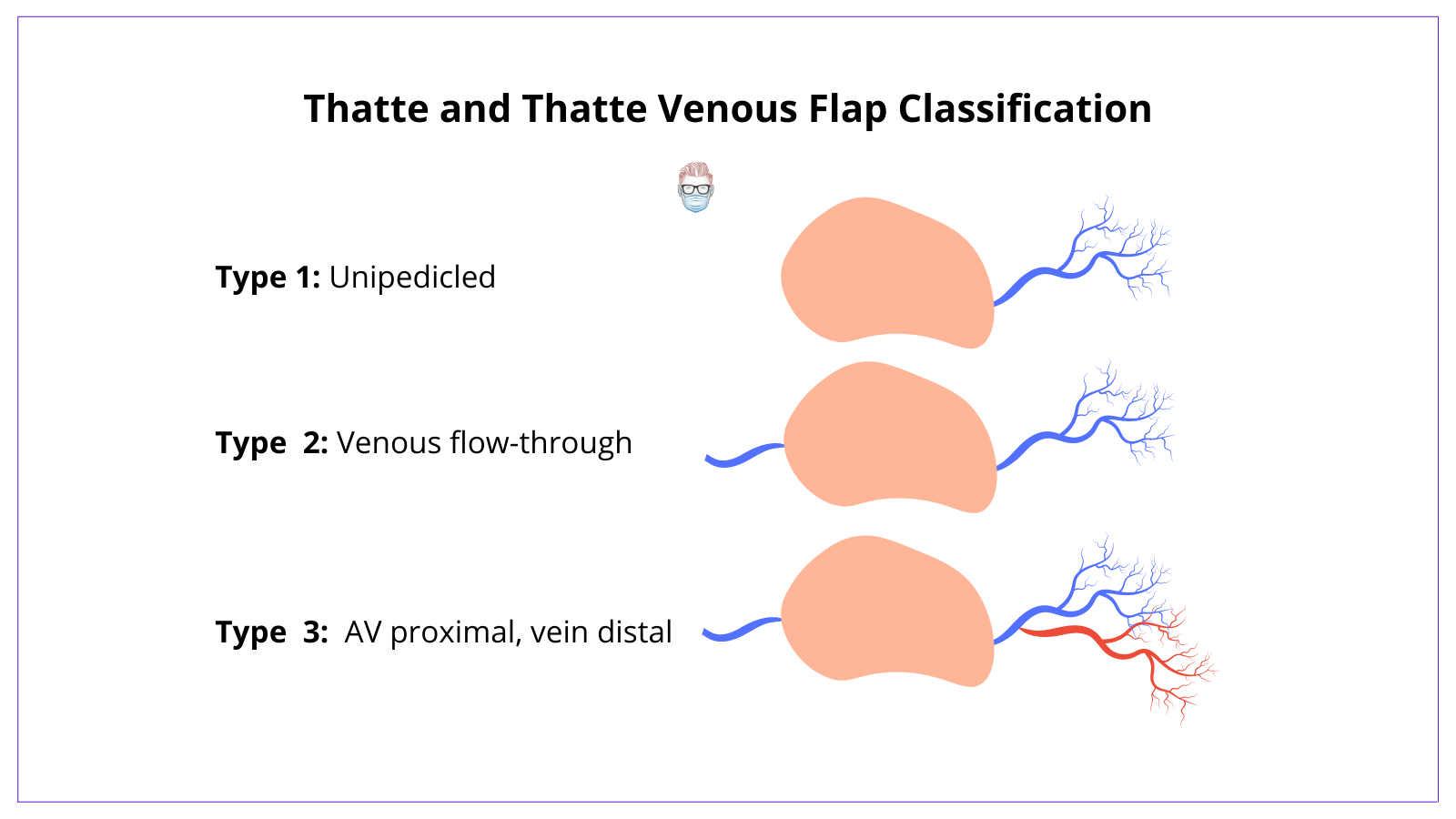Summary Card
Physiology
The exact physiology of venous flaps is relatively unknown.
Classification
Thatte and Thatte is the standard classification for venous flaps. There are 3 types of venous flaps based on the number of veins & their function.
Evaluation
They do not have a high survival rate and are not used regularly due to this.
Physiology of Venous Flaps
The exact physiology of venous flaps is relatively unknown and there are different theories regarding this.
The exact mechanism of venous flaps is currently not completely understood. There are different theories and contributing factors that relate to:
- Perfusion pressures: reverse shunting and reverse flow
- Arteriovenous anastomosis
- Plasmatic imbibition
- Vascular connections
Classification of Venous Flaps
Thatte and Thatte is the standard classification for venous flaps. There are 3 types of venous flaps based on the number of veins & their function.
Thatte and Thatte classify venous flaps into 3 categories based on the number of veins and their function. They are generally quite thin flaps as they contain skin and fat only, not the fascia.
- Type 1: Uni-pedicled venous flap
- Type 2: Bi-pedicled venous flow-through flap
- Type 3: Arterialisation of a venous flap through a proximal AV anastomosis and a distal vein
This classification of venous flaps is illustrated in the image below.

Evaluation of Venous Flaps
Venous flaps do not have a high survival rate and are not used regularly due to this.
Venous flaps are not routine reconstruction surgical practices due to their poor survival rates and general lack of understanding of their physiology.
There are some small advantages to this type of flap:
- Reliable anatomy (for example saphenous vein)
- Minimal donor site morbidity.
Conclusion
1. Venous Flap Physiology: Gained insights into the complex and not fully understood physiology of venous flaps.
2. Classification of Venous Flaps: Learned about the Thatte and Thatte classification, which categorizes venous flaps into three types based on the number of veins and their function.
3. Limitations and Pitfalls: Recognized the challenges and limitations associated with venous flaps, particularly their low survival rates and the common issue of venous congestion.


